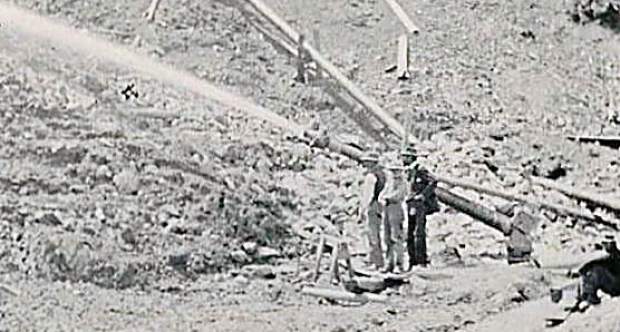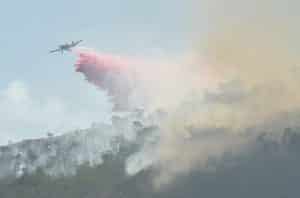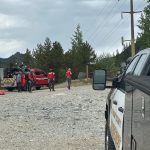History: Hydraulic mining giants at work
Special to the Daily

Bill Fountain Collection / Courtesy Rick Hague |
Hydraulic mining with powerful hoses called giants or monitors caused great damage to the environment in the 1880s. Fed by diverted streams and reservoirs, pressure hoses washed loosened gravel and debris from hillsides and excavated pits into long sluice boxes lined with burlap or cocoa matting held in place by wooden strips called riffles. A giant could swivel 360 degrees, as well as move up and down. The diameter of the pipes decreased between reservoir and nozzle, increasing water pressure to as much as 150 pounds per square inch. The engineers of the day measured and controlled this pressure surprisingly well. The giants stripped the soil and vegetation from the hillsides, leaving bare rock.
A runaway giant presented great danger to those working nearby. The force of the water could easily kill a man instantly. The poorly riveted pipes sometimes exploded when rocks plugged the pipes or nozzle.
Mining was never easy in Summit County. Investors rarely provided enough money for operations. Isolation and inadequate transportation strangled development. The low-grade ore proved expensive to ship to concentrators and then smelters. Inefficient extraction methods missed much of the gold found at depth.
A significant amount of mineral wealth remains in the ground in Summit County today. However, the ore bodies are not rich enough to be profitable and the environmental damage would be far too great in an area now drawing summer and winter visitors for its natural beauty.
This article is part of a book that was written for the Summit Historical Society’s 50th anniversary, “Windows to the Past” by Rick Hague and Sandie Mather. The books are available from Summit Historical Society in Dillon at the Dillon Schoolhouse, in Frisco at the Frisco Historic Park and Museum, and in Breckenridge through the Breckenridge Heritage Alliance at the Welcome Center, Edwin Carter Museum, Barney Ford House Museum and the Gaymon Cabin. It’s also available at the Next Page Books & Nosh in Frisco. Or purchase directly from Hague at (970) 409-7937.

Support Local Journalism

Support Local Journalism
As a Summit Daily News reader, you make our work possible.
Summit Daily is embarking on a multiyear project to digitize its archives going back to 1989 and make them available to the public in partnership with the Colorado Historic Newspapers Collection. The full project is expected to cost about $165,000. All donations made in 2023 will go directly toward this project.
Every contribution, no matter the size, will make a difference.









